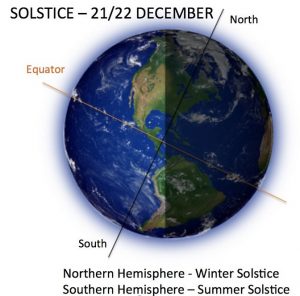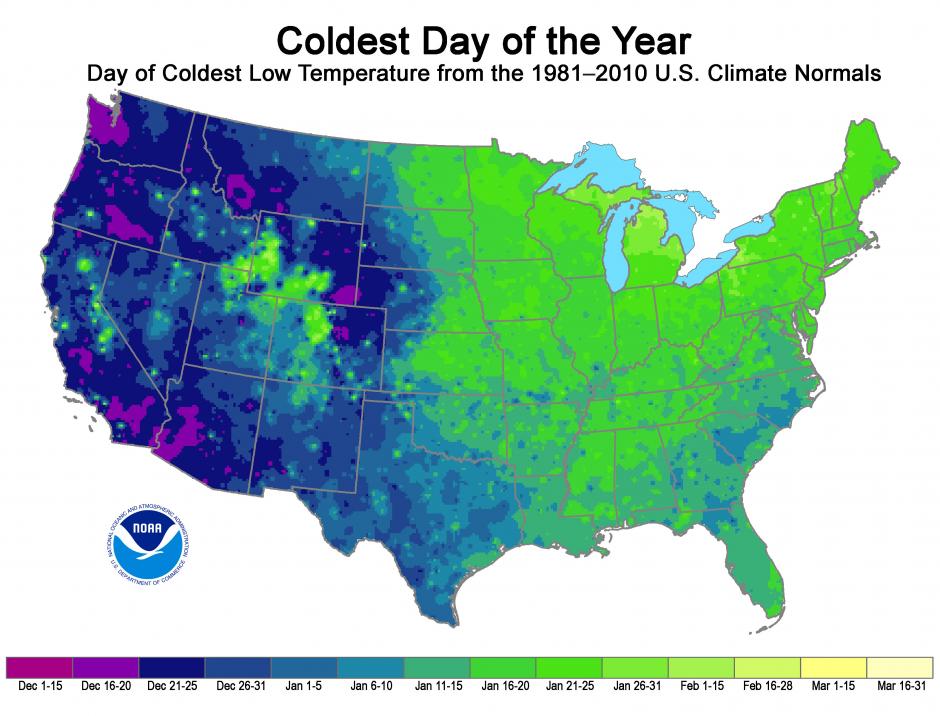
While meteorological winter brought the unofficial start to the season on December 1, today marks the first official day of the winter season. Thanks to the tilt of the Earth’s axis, today is either the longest or shortest day of the year. In the Northern Hemisphere, “peak” sunlight usually occurs on June 20, 21, or 22 of any given year at the summer solstice. In the Southern Hemisphere, peak sunlight arrives today, while the opposite happens here in the Northern Hemisphere. Beyond today, the days will begin to get longer until Summer Solstice arrives. The change in seasons is completely based on the tilt of the Earth and has nothing to do with the distance to the sun. In just a few weeks in 2022, the Earth will be the closest to the sun on January 4.

The word “winter” comes from the Germanic wintar which in turn is derived from the root wed meaning ‘wet’ or water’, and so signifying a wet season. In Anglo-Saxon cultures, years were counted by the winters, so a person could be said to be “2 winters old”.
Winter ’21-’22 officially began at 10:59am ET this morning.
And while today is the shortest day of the year in the Northern Hemisphere, it won’t necessarily be the coldest. The western half of the Lower 48 typically reaches its climatological coldest day in December, whereas most eastern stations reach their minimum in January. In addition, areas with higher snowfall normals, such as the Northeast and high-altitude regions in the West, tend to reach their climatological coldest day much later, which is likely because of the increased reflection of solar radiation at the Earth’s surface due to the presence of snow cover.
